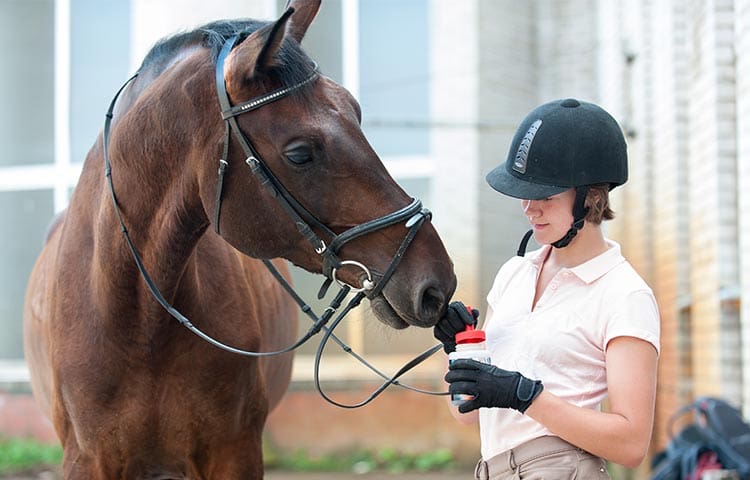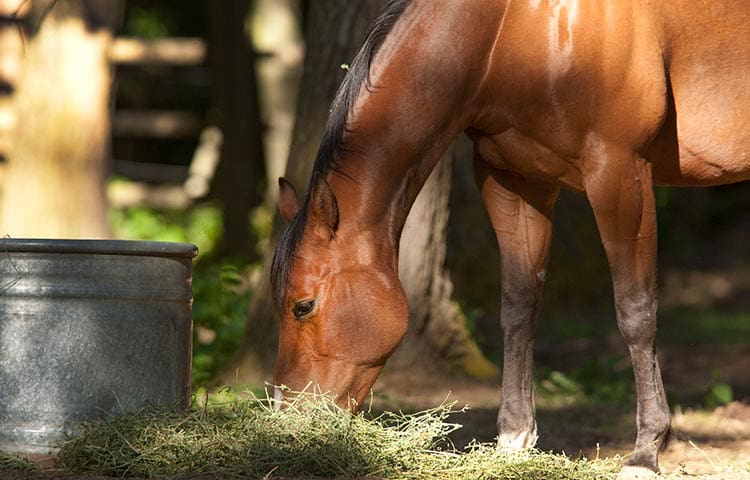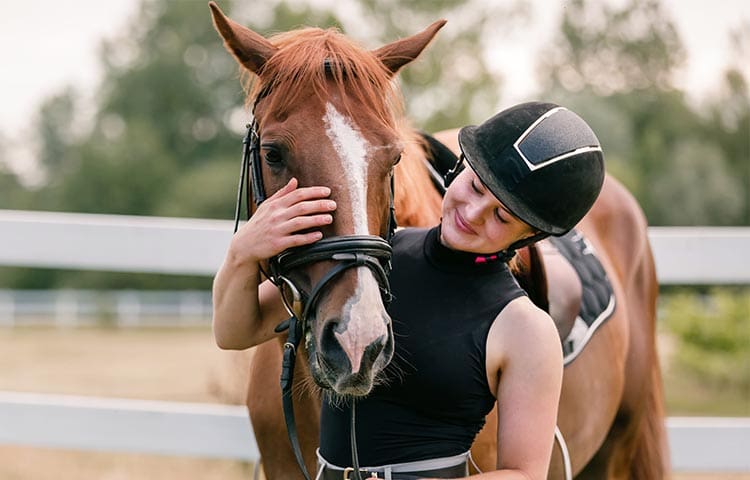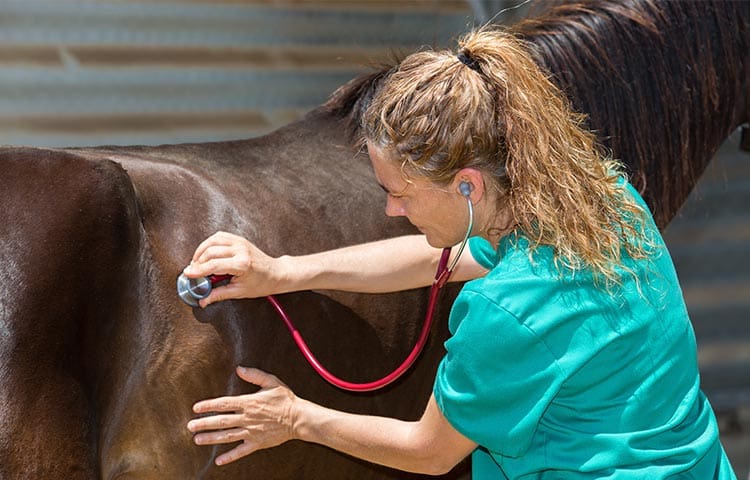Your pet-safe guide to spring in Australia
Keep your pets safe this spring with tips on hidden garden dangers, snakes, and seasonal pests.
Read more24 May 2025
Dreaming of owning a horse? It’s an exciting milestone for equestrians, but buying a horse is a serious commitment that requires careful thought. Whether it’s your first horse or you’re adding a new member to your stables, this guide will walk you through everything you need to know to make an informed decision.
From financial planning to finding the right match, here’s how to make sure your horse-buying adventure leads to a happy, long-term partnership.
Jump to:
Are you ready for a horse?
Choosing the right horse
Costs of horse ownership
Exploring livery
Steps to buying a horse
Tips for bonding with your horse
Owning a horse isn’t just about weekend rides and picturesque hacks in the countryside. It’s a lifestyle commitment that impacts your time, finances, and daily routine.
Horses require daily care. Feeding, grooming, mucking out, and exercise add up to several hours per day. If you have a busy lifestyle, consider whether you can realistically meet these demands.
Horses are expensive to buy and maintain. Costs include livery, feed, farrier visits, veterinary bills, insurance, and more. You need to be prepared for both the expected and unexpected expenses (more on costs below).
Are you confident in your horse care skills? If not, consider working with an experienced trainer or stable to develop your knowledge and gain hands-on experience before committing fully.
Being realistic about these factors is the first step to successful horse ownership.

Finding the right horse is all about balancing what you need, what you can handle, and what you want to achieve. Here are a few things to think about:
Be honest about your skill level. A novice rider is unlikely to thrive with a young or “green” horse.
What do you want from your horse? Whether it’s hacking, dressage, show jumping, or leisure riding, check the horse is suited to your plans.
A calm, well-trained horse is ideal for beginners. Experienced riders may prefer a more ‘spirited’ horse with potential for growth.
It’s also essential to meet and ride a horse before agreeing to a sale. If you can, take a knowledgeable equestrian friend or trainer for an objective second opinion.
Owning a horse is a big financial commitment, and it’s important to understand the costs involved. Here’s a breakdown of what you can expect.
The initial purchase price of a horse or pony varies depending on its type and purpose. For leisure riding, prices typically range from $4,000 to $14,000. However, competition horses bred and trained for performance often start at $20,000 and can go much higher.

Beyond the purchase price, owning a horse comes with ongoing monthly expenses that can add up quickly. Here’s a guide to help you understand the main costs:
Where your horse lives is one of the biggest expenses. Grass livery is usually more affordable, starting at around $200 per month, while full livery can cost as much as $2,400 per month.
Feeding your horse is another key cost. On average, hay, hard feed, and supplements will set you back about $110 to $250 per month.
Proper hoof care is essential. A farrier’s services, such as trimming, balancing, or replacing shoes, typically cost between $60 and $240 per month.
Maintaining your horse’s health isn’t cheap. Vaccinations, worming, and dental checks can total $400 to $800 per year, which breaks down to about $35 to $65 per month.
Taking out horse insurance is also a smart precaution against unexpected illnesses or injuries, with plans starting at $60 to $120 per month, depending on cover.
Your horse’s living environment is as important as the horse itself. If you’re unable to keep the horse or pony at home, you’ll need to choose a livery option based on what you can afford and how ‘hands-on’ you can be.
There are four main livery yard options:
1. Grass livery is the most affordable, offering a simple solution where your horse lives outdoors all year-round.
2. DIY livery gives you access to stable facilities, but you’ll need to handle all daily care yourself.
3. Part livery splits daily care responsibilities between you and the yard staff.
4. Full livery provides complete care by the staff, allowing you to focus solely on spending time with your horse. Unsurprisingly, this is the most expensive option.

Ready to take the plunge into horse ownership? Now comes the fun part – finding your perfect match. Here are our tips to help you get started:
Start by checking out reputable equestrian websites, horse classifieds, or auctions. You can also connect with local horse centres, trainers, or riding schools – sometimes they know of horses for sale.
When you find a horse you like, take time to research the seller. Whether it’s a private individual or business, check reviews, ask for references, and gauge their reputation.
For businesses, check their record with the Australian Securities and Investments Commission (ASIC) or their Australian Business Number (ABN). If the business seems financially unstable, it could signal issues with refunds or returns if something goes wrong.
Don’t be shy, ask as many questions as you need about the horse. Find out the basics like age, breed, training, and health history, but also ask about its temperament, care needs, and past roles (like competition experience or suitability for certain activities). The more you know, the better your decision will be!
Make time to see the horse in person. Watch how it behaves, check its condition, and (if you can) take it for a ride. This is your chance to see how the horse handles and whether it’s a good fit for your skill level. Try to observe it in different situations, like grooming or loading into a trailer.

Never buy a horse without thorough vetting. It’s always a good idea to have an independent vet do a pre-purchase exam. This usually includes a 2-stage or 5-stage vet check, along with a blood sample collection. This can be used as evidence in case issues arise, such as lameness or signs of drug masking.
When you’re ready to buy, make it official with a detailed contract. Include the price, any guarantees, and return policies. Both you and the seller should sign it and keep a copy for yourself. This protects you from any disputes later.
Sometimes things don’t go as planned. If your horse isn’t as described or develops issues within the first few weeks, here’s what to do:
Contact the seller right away and explain your concerns.
Keep detailed records – photos, videos, and vet reports can be really useful.
If needed, seek legal advice, especially if you bought from a dealer.
Mediation is usually quicker and less stressful than legal action, but remember, you may have rights under consumer protection laws or misrepresentation rules.
When your horse arrives, give them some time to settle into their new home. Building trust and a strong relationship doesn’t happen overnight, it takes patience, understanding, and a little effort. Here are some tips to help you get started:
Horses love consistency. Feed, groom, and ride your horse at the same times every day. A regular schedule helps them feel safe and reduces stress, making it easier to build a bond.
Get to know your horse’s personality and body language by spending quality time with them on the ground. Whether it’s leading, lunging, or just hanging out, groundwork is a great way to build trust and improve communication before you hop in the saddle.
Sometimes, it’s helpful to bring in a trainer. A good trainer can guide you through challenges, teach you new techniques, and help you and your horse become a stronger team.
Buying a horse is a major commitment, but with the right preparation, it can lead to years of wonderful companionship and unforgettable memories. Take your time, do your research, and don’t hesitate to seek help from professionals or experienced equestrians along the way.
Get peace of mind with horse insurance